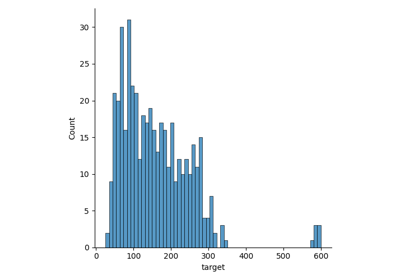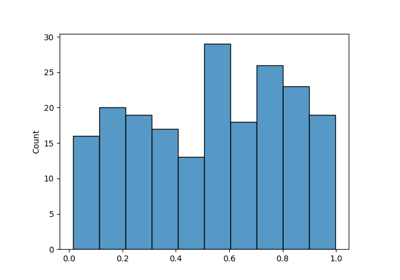Note
This page is a reference documentation. It only explains the class signature, and not how to use it. Please refer to the What you really need to know section for the big picture.
julearn.model_selection.ContinuousStratifiedKFold#
- class julearn.model_selection.ContinuousStratifiedKFold(n_bins, method='binning', n_splits=5, shuffle=False, random_state=None)#
Stratified K-Fold cross validator for regression problems.
Stratification is done based on the discretization of the target variable into a fixed number of bins/quantiles.
- Parameters:
- n_binsint
Number of bins/quantiles to use.
- methodstr, default=”binning”
Method used to stratify the groups. Can be either “binning” or “quantile”. In the first case, the groups are stratified by binning the target variable. In the second case, the groups are stratified by quantiling the target variable.
- n_splitsint, default=5
Number of folds. Must be at least 2.
- shufflebool, default=False
Whether to shuffle each class’s samples before splitting into batches. Note that the samples within each split will not be shuffled. This implementation can only shuffle groups that have approximately the same y distribution, no global shuffle will be performed.
- random_stateint or RandomState instance, default=None
When shuffle is True, random_state affects the ordering of the indices, which controls the randomness of each fold for each class. Otherwise, leave random_state as None. Pass an int for reproducible output across multiple function calls. See Glossary.
Notes
Randomized CV splitters may return different results for each call of split. You can make the results identical by setting random_state to an integer.
- __init__(n_bins, method='binning', n_splits=5, shuffle=False, random_state=None)#
- split(X, y, groups=None)#
Generate indices to split data into training and test set.
- Parameters:
- Xarray-like of shape (n_samples, n_features)
Training data, where n_samples is the number of samples and n_features is the number of features. Note that providing
yis sufficient to generate the splits and hencenp.zeros(n_samples)may be used as a placeholder forXinstead of actual training data.- yarray-like of shape (n_samples,), default=None
The target variable for supervised learning problems.
- groupsarray-like of shape (n_samples,), default=None
Group labels for the samples used while splitting the dataset into train/test set.
- Yields:
- trainndarray
The training set indices for that split.
- testndarray
The testing set indices for that split.
Notes
Randomized CV splitters may return different results for each call of split. You can make the results identical by setting random_state to an integer.
- get_metadata_routing()#
Get metadata routing of this object.
Please check User Guide on how the routing mechanism works.
- Returns:
- routingMetadataRequest
A
MetadataRequestencapsulating routing information.
- get_n_splits(X=None, y=None, groups=None)#
Returns the number of splitting iterations in the cross-validator.
- Parameters:
- Xobject
Always ignored, exists for compatibility.
- yobject
Always ignored, exists for compatibility.
- groupsobject
Always ignored, exists for compatibility.
- Returns:
- n_splitsint
Returns the number of splitting iterations in the cross-validator.

